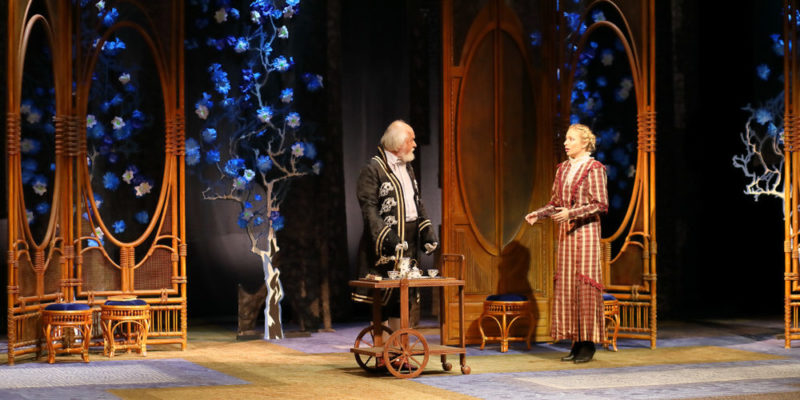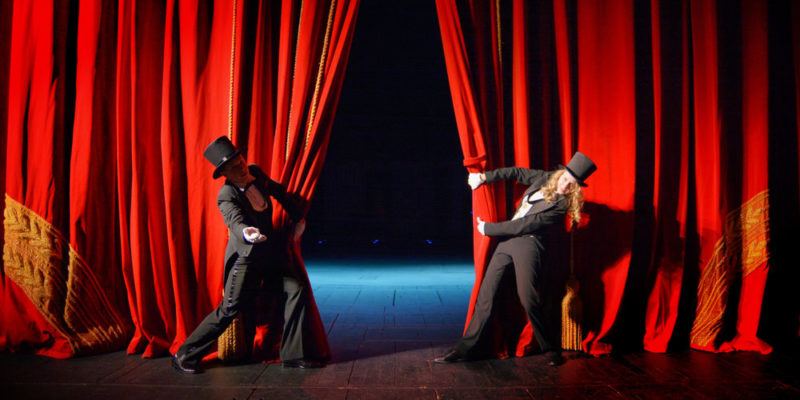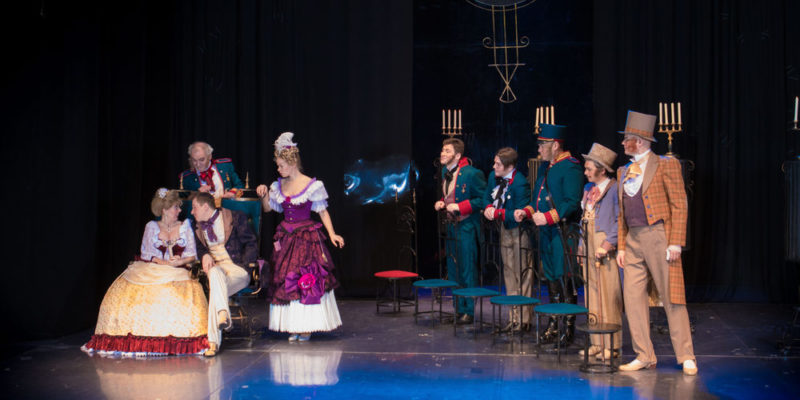We explain what a play is, how it originated and the genres it presents. Also, what are its characteristics, structure and more.
What is a Play (Theatre)?

When we speak of a play we refer to a specific representation of a literary work belonging to the genre of dramaturgy, through a series of human and material elements staged, that is, through the techniques and knowledge of one of the performing arts: Theatre.
A play is the result of the combination of two forms of art: literary and scenic, that is, writing and staging.
The plays have been during the history of humanity one of the preferred means of entertainment, education and mass communication of the different societies, which used them to keep alive their religious traditions, their mythological imaginary or simply to make the community come together. Look in a mirror and you can either laugh at yourself, or cry with yourself.
All this often accompanied by music, dances and costumes, since the Theatre consists of the staging, the interpretation at the moment, of stories and anecdotes whose characters are played by actors and actresses.
Origin of the Theatre

The Theatre as we know it today was born in Ancient Greece (1200 - 146 BC), in which performances with music and dance were carried out in honor of the god Dionysus, known as Dionysian dirithambs.
These types of festivities were common and served as inspiration for the Theatre to grow as an event of religious, symbolic and civic importance., which later focused on the tragic works of its main playwrights: Aeschylus, Sophocles, Euripides and Aristophanes.
In other latitudes there were similar representations, as in India the festivities in honor of Brahma, but from Ancient Greece and its heirs by force, the Roman Empire, the Theatre reached us after having been incorporated into Christianity and having reappeared with strength in the European Renaissance and especially in the Spanish Baroque (known as the "Golden Age").
More in: Greek theatre
Theatre genres
Traditionally, plays are classified into two genres: tragedy and comedy. This classification is the oldest and is part of the feeling that each gender implies: sadness and laughter, that is, they represent the human being in two different ways: as a courageous being fallen from grace, or as a villain and common being of the that it is possible to laugh.
Then other genres appeared that made the classification more complex: tragicomedy (romantic drama), which mixes tragedy and comedy; the farce, which is a caricature of the characters and situations; melodrama, which incorporates musical accompaniment to tragedy for each emotional situation; realistic drama, which seeks to imitate reality to move the public and sensitize it socially; vaudeville or variety Theatre, etc.
Elements of a play

In general, any theatrical performance has more or less the following elements:
- Characters: Played by the actors, they represent each of the participants in the story, whether they are protagonists, antagonists or simply tertiary (circumstantial) characters. It is possible for an actor to play more than one character.
- Scenarios: These are the locations where the action occurs, that is, the spaces that will be populated by the characters. They can be represented on stage by decorative elements (cardboard figures, paintings, etc.) or they can simply be imaginary, aroused by the action itself on the empty stage.
- Objects: Like the scenarios, they are elements of support to the action, such as swords, pistols, elements that intervene in what happens, but that are not entirely vital and that is why they can be present or imagined.
- Curtain: Present in Theatres, it is a strip of cloth or some opaque material that marks with its withdrawal the beginning of the work or a segment of it and with its fall the end of the work or said segment. In the case of the open-air Theatre, there is no curtain, but other resources are used.
- Music: It may or may not be present in the performance, either live, recorded or simply with sound effects for certain parts.
- Public: Although it is not part of the play, it does form part of the performance, since it involves all the spectators who are present in the Theatre or where the performance takes place and who decide to agree with the play and allow it to unfold and believe in what happens in it as if it were true, until it ends.
Script of a play

The theatrical works more or less faithfully follow the order established in a theatrical script or dramatic text, which is the written work. There you will find all the textual marks that allow you to recreate the work, and which are:
- Dialogues: What each character says, usually preceded by their name and a colon.
- Annotations: The description of what the character does or how it does it. This not only implies concrete actions, but also entering and leaving the scene, or talking to oneself (known as “apart”).
- Descriptions: Part of the dimensions, serves only to describe where the action occurs, what is around, etc.
Structure of the play
 The plays are usually structured in acts and scenes, as follows:
The plays are usually structured in acts and scenes, as follows:
- Acts: They are the portions in which the work is divided and that usually imply a radical change of scenery, characters or an important passage of time in the narrative. They usually divide the work into an introduction or approach, a complication or development, and a resolution or outcome. Between act and act there is usually a short break, known as an interlude. Many contemporary works occur in a single act.
- Scenes: Acts, in the same way, are divided into scenes, which are basically situations in which things happen on stage. A scene can be long or short, according to the author's wishes, and it can involve as many characters and actions as you like. Usually before the departure of a main character, the change of scenery or minimal advance in time, a new scene opens.
Monologues in a play
 Just as there are dialogues in plays, there are also monologues. In the latter, there is only one character who speaks, expresses himself and is perceived by the public, but who does not interact directly with any other character. Many works are, in their entirety, the monologue of a specific character.
Just as there are dialogues in plays, there are also monologues. In the latter, there is only one character who speaks, expresses himself and is perceived by the public, but who does not interact directly with any other character. Many works are, in their entirety, the monologue of a specific character.
Street Theatre
Street Theatre is one whose works take place outside of a Theatre or an entertainment venue. They can take place in the square or the street, with all passersby as spectators. It is very popular during festivals or Theatre fairs.
Importance of plays
 Theatre today is one of the main forms of mass storytelling that, unlike film and television, takes place in real time, right in front of the viewers' eyes.
Theatre today is one of the main forms of mass storytelling that, unlike film and television, takes place in real time, right in front of the viewers' eyes.This allows an emotional and human connection that is lost in other formats and that, therefore, enhances the contents of the work much more, be they happy, sad or reflective.
Main authors of plays
The list of the great playwrights in history is too long, but usually cannot be without the names of:
- Aeschylus, Sophocles, Euripides (Ancient Greece)
- William Shakespeare, Christopher Marlowe, Oscar Wilde ( England )
- Miguel de Cervantes, Lope de Vega, Tirso de Molina, Calderón de la Barca (Spanish Golden Age)
- Johannes Wolfgang von Goethe ( Germany )
- Henrik Ibsen, Bertolt Brecht, Samuel Beckett and August Strindberg (contemporary European authors).
Examples of plays
 Some well-known plays are:
Some well-known plays are:
- Sophocles' Oedipus the King
- The oresteia of Aeschylus
- Romeo and Juliet by William Shakespeare
- Hamlet by William Shakespeare
- Otello by William Shakespeare
- Life is a dream of Calderón de la Barca
- Faust by J. Goethe
- Waiting for Godot by Samuel Beckett
- The Seagull by Henrik Ibsen
Anas is an editor of a prestigious publishing company in the United States. She studied Mathematics in Arizona. Anas is also a teacher and one of her long-term goals is to build an institution that offers free education to everyone who are financially not stable. .
Leave a reply
Your email address will not be published. Required fields are marked *Recent post

Sport: What Is It, Types, Risks, Features, Characteristics and Examples

Dogs: Emergence, Features, Characteristics, Feeding and Breeds

Story: Definition, Elements, Structure, Features and Characteristics

